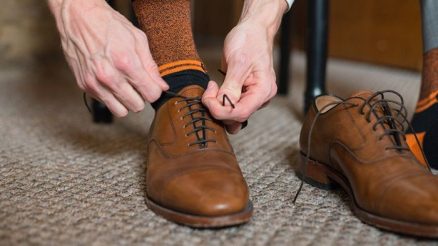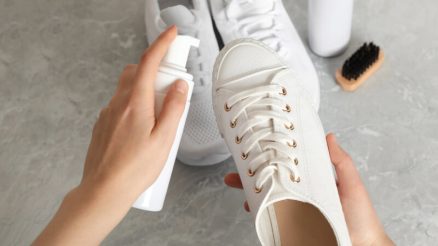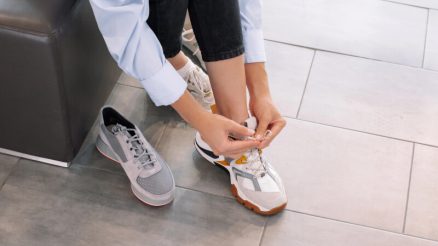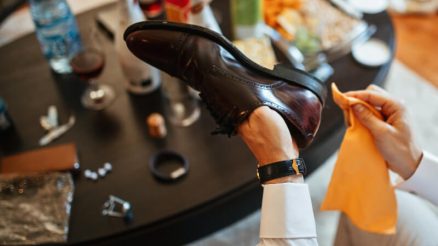Whether you’re commuting in the rain, hiking through wet trails, or just caught in an unexpected downpour, having waterproof shoes can make a huge difference in comfort and durability. The good news is that you don’t need to buy new shoes—you can waterproof most types of footwear at home with the right techniques and products.
In this guide, we’ll walk you through how to waterproof your shoes step-by-step, based on material type and purpose.
Why Waterproof Your Shoes?
Waterproofing your shoes isn’t just about keeping your feet dry—it also:
-
Prevents damage to leather, suede, canvas, and mesh.
-
Extends the lifespan of your footwear.
-
Improves comfort and warmth in cold, wet weather.
-
Reduces odor and mold growth inside the shoes.
Whether you wear sneakers, hiking boots, or casual leather shoes, regular waterproofing is essential for long-term use.
Know Your Shoe Material
Before you start, check the material of your shoes. Different materials require different waterproofing methods:
| Shoe Material | Waterproofing Method |
|---|---|
| Leather | Wax or cream waterproofing |
| Suede/Nubuck | Spray-on waterproofing |
| Canvas | Wax or spray-on waterproofing |
| Mesh/Fabric | Spray-on waterproofing |
| Synthetic | Spray or silicone-based treatment |
What You’ll Need
Here are common waterproofing materials and tools:
-
Waterproofing spray (for fabric, suede, and synthetics)
-
Beeswax or waterproofing wax (ideal for leather and canvas)
-
Waterproofing creams (suitable for leather)
-
Hairdryer or heat gun (optional, helps wax absorb)
-
Soft cloth or brush
-
Mild soap and water (for cleaning)
Step-by-Step Instructions
1. Clean Your Shoes Thoroughly
Dirt, mud, and oil will prevent waterproofing agents from absorbing properly. Use a damp cloth or brush and mild soap to clean your shoes. Let them dry completely before moving to the next step.
2. Choose the Right Waterproofing Method
For Leather Shoes & Boots:
-
Use a wax-based or cream waterproofing product.
-
Apply with a soft cloth, rubbing it in circular motions.
-
Let it sit for a few minutes, then buff with a clean cloth.
-
Optional: Use a hairdryer to slightly melt the wax for deeper absorption.
Popular Products: Otter Wax, Sno-Seal, Nikwax Waterproofing Wax for Leather.
For Suede or Nubuck Shoes:
-
Do not use wax or creams (they can ruin the texture).
-
Use a suede-specific waterproof spray.
-
Spray evenly from about 6–8 inches away.
-
Let dry for 24 hours before wearing.
Tip: Use a suede brush beforehand to raise the nap and remove dust.
Recommended Sprays: Scotchgard Suede & Nubuck, Nikwax Nubuck & Suede Proof.
For Canvas or Fabric Shoes:
-
You can use either a waterproofing spray or wax.
-
With wax: Rub it over the canvas in sections, then use a hairdryer to melt it in.
-
With spray: Apply an even coat and let it dry thoroughly.
Good Options: Kiwi Camp Dry, Crep Protect Spray.
3. Let It Cure
After applying your chosen waterproofing agent, allow at least 24 hours for full drying and bonding. Place your shoes in a well-ventilated area, away from direct sunlight or heat.
4. Test the Waterproofing
Once cured, sprinkle or pour a small amount of water on your shoe. If the water beads up and rolls off, you’re all set! If not, consider applying a second coat.
Maintenance Tips
-
Reapply every few months, especially after heavy use or exposure to rain or snow.
-
Clean before each application for better results.
-
Store shoes in a dry area to prevent mold and moisture buildup.
-
Use shoe trees for leather shoes to maintain shape during drying.
DIY vs. Store-Bought: What’s Better?
Some people recommend using candles, Vaseline, or hair spray for DIY waterproofing—but these are usually temporary and can damage certain materials. For long-lasting protection, it’s worth investing in purpose-made waterproofing products.
Final Thoughts
Waterproofing your shoes is a simple but powerful way to keep your feet dry and your footwear in great condition. Whether you’re heading out for a muddy hike or just want to prep for rainy weather, following the right steps for your shoe material can save you money and hassle in the long run.
Take the time to waterproof your shoes now—and walk confidently through whatever weather comes your way.








